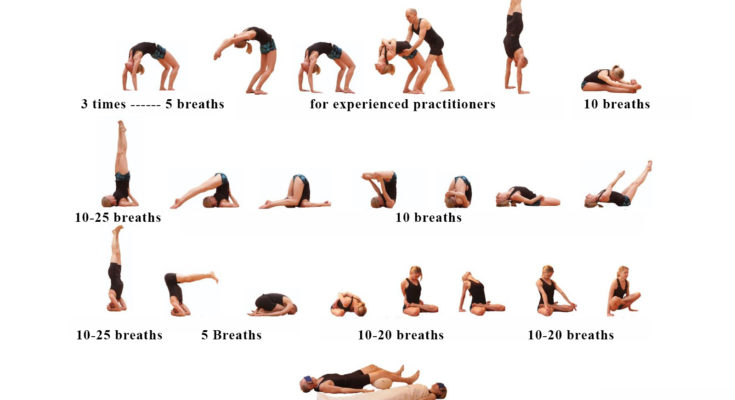Yoga is a simple method. By following this path of meditation, all the people at home can also achieve the state of yoga and can get physical, mental and spiritual benefits from it. Everyone knows that Maharishi Patanjali is the father of Yogasutra. It is he who has given yoga science a systematic shape. Patanjali has called yoga as Ashtanga Yoga or Raja Yoga.
All types of yoga are included in the above eight organs of Ashtanga Yoga. The eightfold path of Lord Buddha is also a part of the above mentioned eight parts of yoga. However, the Ashtanga Yoga of Yoga Sutras is a later creation of the Buddha. Ashtanga yoga is a very important spiritual practice, which Patanjali has described in his sutras.
There is a great sage in India, Maharishi Patanjali, who composed an accurate and authentic scripture Yogadarshana as an explanation of yoga. Yogadarshan is a very important and authentic book. In it, the principles of Yoga are represented in simple, precise and clear scientific language. Therefore, this book is very useful for every type of yoga practitioner. Hence, those who want to progress in yoga must-read Yoga Darshan. So that all the misconceptions related to yoga can be solved.
In about 200 BCE, Maharishi Patanjali placed yoga in writing and created the Yoga Sutra. Patanjali is called the father of yoga because of the creation of the Yoga-Sutra. He has described the eight parts of yoga – Yama, niyam, asana, pranayama, pratyahar, dharna, meditation and samadhi. You can join a 500-hour yoga teacher training by Rishikesh YTTC to learn all the aspects of yoga and meditation.
Various parts of Ashtanga Yoga:
The above eight organs also have their own sub-organs. Currently, only three parts of yoga are in vogue – asana, pranayama and meditation. Now let’s talk about the eight parts of Ashtanga Yoga in Hindi. Yama, there are five, – Ahimsa, Satya, Astaya, Brahmacharya, and Aparigraha. Similarly, there are five rules. These are Shoucha (purification of body and mind), Santhosh, Tapa, Swadhyaya (knowing myself who I am) and Ishwarpranidhan (complete devotion to God). Asana means to sit comfortably without moving. In Pranayama, Pranauraja, which runs the body, is extended and controlled. Similarly in pratyahara, the mind and senses are removed from the external subjects and the mind wandering in perception is brought to one place. After this comes meditation, which means to experience our nature. The last rung is Samadhi, that is, to remain in one’s pure self.
Yama
Non-violence, truth, non-stealing, non-stealing like celibacy, aprachara etc. are prescribed for this restraint, physical and mental. Failure to follow them affects both the life and society of the person.
Niyama
Healthy living, spiritual enlightenment, and liberation are the main habits promoted by Niyama. It is all about doing good deeds, good behavior, virtuous habits, activities and observances in order to live a healthy and spiritual life.
Asana
Patanjali has termed the action of sitting steadily and pleasantly. Later thinkers have imagined many asanas. In fact, asana is the main subject of hatha yoga. A detailed description is found in the ‘Hatha Yoga Pratipika’, ‘Ghernd Samhita’ and ‘Yogashikhopanishad’ related to them.
Pranayama
Nadi means for the proper role of yoga and regulation of breathing and breathing is done for his awakening. Pranayama is very helpful for conquering the agility and disturbance of the mind.
Pratyahara
Removing the senses from subjects is the name of pratyahara. The senses outwardly man. Through this practice of pratyahara, the seeker attains the ultimate state of introversion required for yoga.
Dharana
Concentration is to focus the mind on a particular place. By the way, the main place to stabilize the mind in the body is the head, forehead, nose, tongue, gorge, heart, navel etc. But the heart is considered the best place. The meaning of the heart region is not the location of the organ called the heart of the body, but the part that is in the middle of the chest.
Dhyana
When the mind becomes fit while contemplating the object, it is called meditation. In the state of complete meditation, knowledge of another thing or its memory does not enter the mind.
Samadhi
It is a state of mind in which the mind becomes completely absorbed in the contemplation of the object. Yoga philosophy considers salvation possible only through samadhi.
There are two categories of Samadhi, Samprajnata and Asamprajnata. Sampragyanat samadhi means vitarka, thought, bliss and in the asamprajnata, all types of devotions like Satvik, Rajas and Tamas are stopped.
Yoga has many benefits. It reduces stress, increases body strength, balance and flexibility, as well as improves health health. It also relaxes you, helps you sleep better, and leads to more energy and better moods. It also improves blood flow, which is an added benefit for men as yoga poses, and use of Aurogra 100 and Malegra 100 can help them manage erectile dysfunction (ED).
If you are looking to become a certified Ashtanga Yoga teacher you can check out YogTravel for the listing of top yoga teacher training courses and give your new career a boost that it needs. Check Out Healty Tips with us here.




